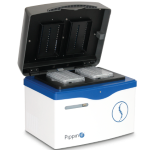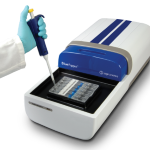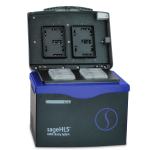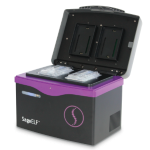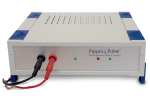January 2025
Authors:
Neeru Gandotra, Antariksh Tyagi, Irina Tikhonova, Caroline Storer, Curt Scharfe
Abstract:
“Purpose:
Newborn screening (NBS) identifies rare diseases that result from the recessive inheritance of pathogenic variants in both copies of a gene. Long-read genome sequencing (LRS) is used for identifying and phasing genomic variants, but further efforts are needed to develop LRS for applications using low-yield deoxyribonucleic acid (DNA) samples.
Methods:
In this study, genomic DNA with high molecular weight was obtained from two cystic fibrosis patients, comprising a whole blood sample (CF1) and a newborn dried blood spot sample (CF2). Library preparation and genome sequencing (30-fold coverage) were performed using 20 nanograms of DNA input on both the PacBio Revio system and the Illumina NovaSeq short-read sequencer. Single-nucleotide variants, small indels, and structural variants were identified for each dataset.
Results:
Our results indicated that the genotype concordance between long- and short-read genome sequencing data was higher for SNVs than for small indels. Both technologies accurately identified known pathogenic variants in the CFTR gene (CF1: p.(Met607_Gln634del), p.(Phe508del); CF2: p.(Phe508del), p.(Ala455Glu)) with complete concordance for the polymorphic poly-TG and consecutive poly-T tracts. Using PacBio read-based haplotype phasing, we successfully determined the allelic phase and identified compound heterozygosity of pathogenic variants at genomic distances of 32.4 kb (CF1) and 10.8 kb (CF2).
Conclusions:
Haplotype phasing of rare pathogenic variants from minimal DNA input is achieved through long-read genome sequencing. This approach has the potential to eliminate the need for parental testing, thereby shortening the time to diagnosis in genetic disease screening.”
Sage Science Products:
PippinHT
Methods Excerpt:
“Approximately 1 g of pooled PCR product was used for size selection (7KB) using a PippinHT instrument. LRS was performed on PacBio Revio”
Author Affiliations:
Department of Genetics, Yale School of Medicine, New Haven, CT
SUNY Upstate Medical University, 841 East Fayette Street, Syracuse, NY
PacBio, Menlo Park, CA
Genetics in Open Medicine (Pre-Proof)
DOI:10.1016/j.gimo.2025.101962
